Advanced Full-Scale
Chemical Etching Manufacturer
We’re the most capable photo chemical etching firm in North America, providing blanking and forming from prototype through high production.
We’re the most capable photo chemical etching firm in North America, providing blanking and forming from prototype through high production.
Phone: 315-331-7680 401 W. Shore Blvd., Newark, NY 14513
Who is Fathom Digital Manufacturing? One of the largest on-demand digital manufacturing platforms in North America.
Photochemical etching supports product development from prototype through to production.
Newcut is dedicated to getting precision parts to you when you need them, not after. We’ll get you most parts with a 8-10 day lead time.
Newcut has 50 years of experience in the photochemical etching business. That means we have the experience and knowledge to get your part right. Every time.
Newcut prides itself on its ability to etch special metals like INCONEL® 625 and other superalloys with revolutionary applications.
Photochemical machining, also known as photochemical milling or photo etching, is a chemical milling process used to fabricate thin sheet metal components. This process emerged in the 1960s as an offshoot of the printed circuit board industry.
It works by “printing” a part design onto photoresist which is transferred onto a thin sheet of metal. The areas of photoresist which have not been printed are corrosively removed using etchants, leaving precisely shaped, burr-free metal parts.
Designers, manufacturing engineers, and purchasing groups are recognizing the advantages photo chemical etching has to offer.
It enables you to create complex parts that are beyond hard tool capability and to fabricate the part in dead soft or full hard material without burrs or metal distortion.
When time means money, photochemical etching can save your firm dollars through a turnaround time that’s faster than other manufacturing methods.
Films for photochemical etched parts can be produced directly from your CAD drawings. No hard tools or work-holding fixtures are required.
Photochemical etching is an ideal manufacturing method for experimenting with prototype part designs. The same process used to create prototype parts is used to make your production parts.
Once in production, your part designs can be changed and applied to the next set of parts exceptionally fast.
Chemical etching is also known as photochemical machining (PCM), photochemical milling, photo chemical etching or just photo etching.
Designers, manufacturing engineers, and purchasing groups are recognizing the advantages photo chemical etching has to offer.
Some of the benefits of this unique manufacturing process are the ability to make a complex part that is beyond hard tool capability and to fabricate the part in dead soft or full hard material without burrs or metal distortion.
Another significant benefit is response time. An order may be filled in days, which allows the design to be proven without incurring the cost of a hard tool.
Photo etching is a growing industry, gaining experience and recognition as a viable method of working metal.
Engineers need to consider several rules of thumb when designing parts for photo chemical etching. This helpful guide summarizes the best practices you need to keep in mind.

A photo plotter is used to create a photo tool which is a negative image of the part. The part is nested to maximize the number of parts per sheet. Two laminates are printed, one each for the top and bottom of the metal sheets.
Because each photo-tool is a made of film, tooling can be finished in just hours and at a far lower cost than required by other machining methods. Additionally, these qualities ensure that part designs can be changed and applied to production exceptionally fast.
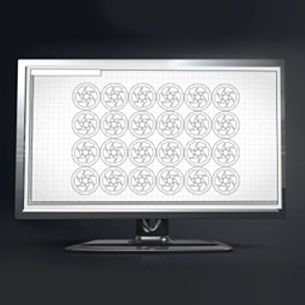

Proper metal preparation, degreasing, and the removal of surface contaminants is essential for proper adhesion between the raw material and the photoresist during the coating process.
Modern PCM companies have invested in “clean lines” for improved material cleanliness. These conveyorized machines are typically multi-chambered and material is put through a series of cleanings and rinses to ensure proper surface condition.
The quality and quantity of the finished parts depends greatly on the care taken during this step.
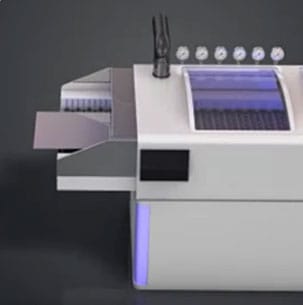

The material is coated with photoresist directly after cleaning which reduces the chance of surface contamination and oxidation. The coating is photosensitive and resistant to the etchant used to cut the chosen metal. Dry film or liquid resist is applied to both sides of the work piece to allow etching for both sides simultaneously.
Advances in resist technology combined with new and improved Computer Assisted Design (CAD) artwork have enabled photoresist coatings to accommodate extremely complex features.
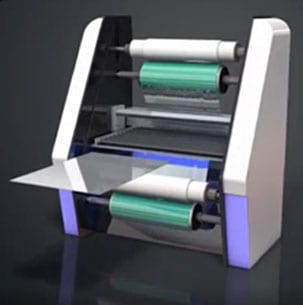
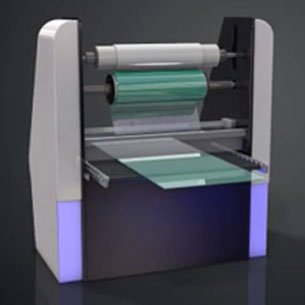
During this step in the photo etching process, material with the photosensitive coating is exposed to UV light. This is a straightforward process that transfers the photo tool image onto the coated material.
The metal is put into the double-sided photo tool and is exposed to UV light on both sides, an image is formed in the photoresist. This then becomes a durable image on both sides of the metal.
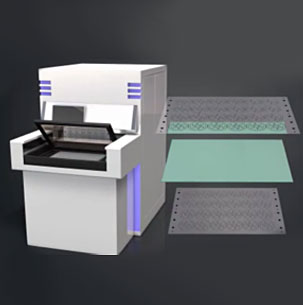
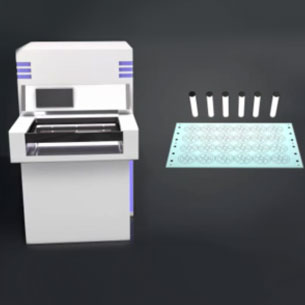
Virtually all metals can be etched, although some are etched more readily than others. The vast majority of metals can be etched using a relatively innocuous etchant, an aqueous solution of ferric chloride.
First, the metal is rinsed of the remaining photoresist that hasn’t bonded to the metal. Then, etchants are applied to the metal in a conveyor machine. During this process, the non-bonded areas of metal are exposed to the etchants and begin to etch upon contact.
Because etchants are applied to the entire sheet of metal at once, PCE maintains the unique ability to make every cut simultaneously, which can save countless hours for parts with complex geometries or features, and especially for fine meshes and screens.
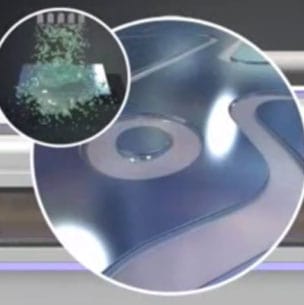

The next step in the manufacture of chemically etched parts is stripping off the protective coating of photoresist. Many companies use machines that have a strip chamber on the etch machines to increase efficiency.
Now your part is finished! Or is it?
Parts often require secondary processes or treatments post-blanking before they are completely finished and ready to be shipped. Luckily, Newcut can take care of that.
We offer a wide range of services including heat treatment, plating, and precision forming through partnerships with local treatment firms and our sister companies. As part of Fathom Digital Manufacturing, Newcut has access to a robust nationwide network of comprehensive additive and advanced manufacturing capabilities.

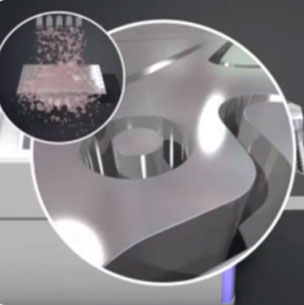
Founded in 1970 in New York’s Finger Lakes Region, Newcut is one of the nation’s first photochemical etching processors. For 50 years, Newcut has been the leader in photochemical machining technology with a reputation for exceptional quality, accuracy and service. Newcut provides short lead times, cutting-edge equipment and the ability to etch specialty metals for customers across the country.
Photochemical etching supports product development from prototype through to production. This high-precision yet cost-effective manufacturing process allows for intricate patterns and complex features without increasing per unit pricing. Photochemical etching produces clean, burr-free parts while maintaining properties like material thickness. Photochemical etching is an excellent choice for a variety of products, such as:
For 50 years we have maintained our position as a leader in photochemical machining technology with a reputation for exceptional quality, accuracy and service.
Today, Newcut by Fathom continues to develop groundbreaking chemical etching services and to etch complex parts with exciting new materials.
It takes more than age to be an industry leader. That’s why we pride ourselves on exceptional customer service, quality and precision. The team at Newcut has etched dozens of materials, so we know what it takes to produce the parts you need. Our R&D specialists help our customers find solutions for their most intricate parts. Newcut’s short lead times, cutting-edge equipment, and ability to etch special metals like Inconel® 625 make Newcut by Fathom the ultimate provider for PCE parts of the highest quality, for every industry.
Newcut is dedicated to staying on the cutting edge, as demonstrated by our continuous improvements and adherence to industry standards. In addition to the certification below, Newcut is also ITAR registered.
2018 – AS9100:2016 with ISO 9001:2015 Certification
2018 – Built a new manufacturing facility with the latest equipment
2019 – Acquired LED exposure machine for superior developing
Fathom Manufacturing’s extensive certifications include ISO 9001:2015, ISO 9001:2015 Design, ISO 13485:2016, AS9100:2016, NIST 800-171 and ITAR.
Newcut by Fathom Linecard / /
Newcut is located in Newark, New York but services all the following local areas: Ithaca, New York, Buffalo, Rochester, Utica, Mount Vernon, Syracuse, Binghamton, Elmira, Niagara Falls, Albany, Schenectady, Cornwall, Poughkeepsie, Yonkers and more. Additional areas can receive drop shipped parts or be served by other Fathom facilities that span the entire United States across the areas of additive, CNC machining, injection molding, sheet metal fabrication and over 25 different manufacturing processes.
Newcut by Fathom
401 W. Shore Blvd.
Newark, NY 14513 USA
Phone: 315-331-7680
Email: sales.newark@fathommfg.com
Fax: 315-331-0313
Precision manufacturing
from coast to coast.
HEADQUARTERS //
1050 Walnut Ridge Drive
Hartland, WI 53029
877-328-4668
ARIZONA
444 W. 21st St. Ste. 101
Tempe, AZ 85282
480-966-2300
COLORADO
7770 Washington St.
Denver, CO 80229
303-288-6855
ILLINOIS
1207 Adams Drive
McHenry, IL 60051
815-385-7500
1401 Brummel Ave
Elk Grove, IL 60007
847-952-8088
MINNESOTA
13758 Johnson Street NE
Ham Lake, MN 55304
763-755-7575
NEW YORK
1920 Slaterville Rd.
Ithaca, NY 14850
607-277-7070
401 W. Shore Blvd.
Newark, NY 14513
315-331-7680
TEXAS
1513 Sam Bass Rd.
Round Rock, TX 78660
512-255-1477